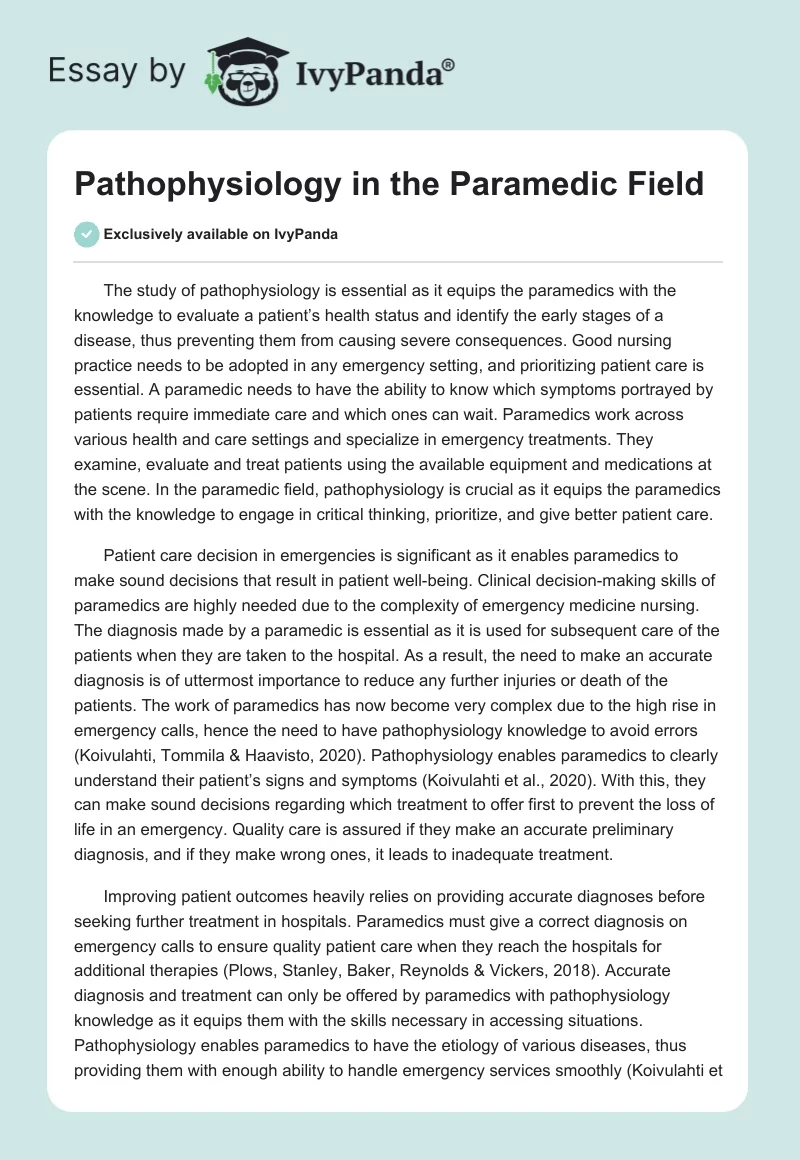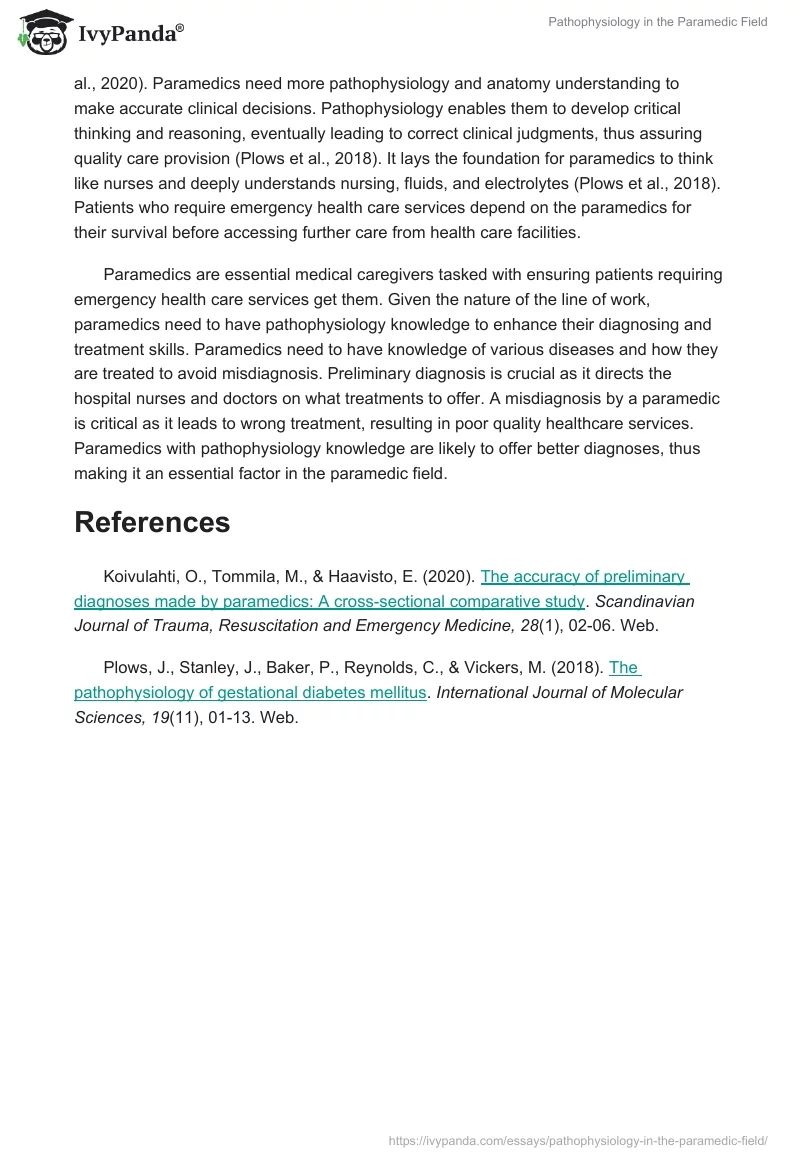The study of pathophysiology is essential as it equips the paramedics with the knowledge to evaluate a patient’s health status and identify the early stages of a disease, thus preventing them from causing severe consequences. Good nursing practice needs to be adopted in any emergency setting, and prioritizing patient care is essential. A paramedic needs to have the ability to know which symptoms portrayed by patients require immediate care and which ones can wait. Paramedics work across various health and care settings and specialize in emergency treatments. They examine, evaluate and treat patients using the available equipment and medications at the scene. In the paramedic field, pathophysiology is crucial as it equips the paramedics with the knowledge to engage in critical thinking, prioritize, and give better patient care.
Patient care decision in emergencies is significant as it enables paramedics to make sound decisions that result in patient well-being. Clinical decision-making skills of paramedics are highly needed due to the complexity of emergency medicine nursing. The diagnosis made by a paramedic is essential as it is used for subsequent care of the patients when they are taken to the hospital. As a result, the need to make an accurate diagnosis is of uttermost importance to reduce any further injuries or death of the patients. The work of paramedics has now become very complex due to the high rise in emergency calls, hence the need to have pathophysiology knowledge to avoid errors (Koivulahti, Tommila & Haavisto, 2020). Pathophysiology enables paramedics to clearly understand their patient’s signs and symptoms (Koivulahti et al., 2020). With this, they can make sound decisions regarding which treatment to offer first to prevent the loss of life in an emergency. Quality care is assured if they make an accurate preliminary diagnosis, and if they make wrong ones, it leads to inadequate treatment.
Improving patient outcomes heavily relies on providing accurate diagnoses before seeking further treatment in hospitals. Paramedics must give a correct diagnosis on emergency calls to ensure quality patient care when they reach the hospitals for additional therapies (Plows, Stanley, Baker, Reynolds & Vickers, 2018). Accurate diagnosis and treatment can only be offered by paramedics with pathophysiology knowledge as it equips them with the skills necessary in accessing situations. Pathophysiology enables paramedics to have the etiology of various diseases, thus providing them with enough ability to handle emergency services smoothly (Koivulahti et al., 2020). Paramedics need more pathophysiology and anatomy understanding to make accurate clinical decisions. Pathophysiology enables them to develop critical thinking and reasoning, eventually leading to correct clinical judgments, thus assuring quality care provision (Plows et al., 2018). It lays the foundation for paramedics to think like nurses and deeply understands nursing, fluids, and electrolytes (Plows et al., 2018). Patients who require emergency health care services depend on the paramedics for their survival before accessing further care from health care facilities.
Paramedics are essential medical caregivers tasked with ensuring patients requiring emergency health care services get them. Given the nature of the line of work, paramedics need to have pathophysiology knowledge to enhance their diagnosing and treatment skills. Paramedics need to have knowledge of various diseases and how they are treated to avoid misdiagnosis. Preliminary diagnosis is crucial as it directs the hospital nurses and doctors on what treatments to offer. A misdiagnosis by a paramedic is critical as it leads to wrong treatment, resulting in poor quality healthcare services. Paramedics with pathophysiology knowledge are likely to offer better diagnoses, thus making it an essential factor in the paramedic field.
References
Koivulahti, O., Tommila, M., & Haavisto, E. (2020). The accuracy of preliminary diagnoses made by paramedics: A cross-sectional comparative study. Scandinavian Journal of Trauma, Resuscitation and Emergency Medicine, 28(1), 02-06. Web.
Plows, J., Stanley, J., Baker, P., Reynolds, C., & Vickers, M. (2018). The pathophysiology of gestational diabetes mellitus. International Journal of Molecular Sciences, 19(11), 01-13. Web.


